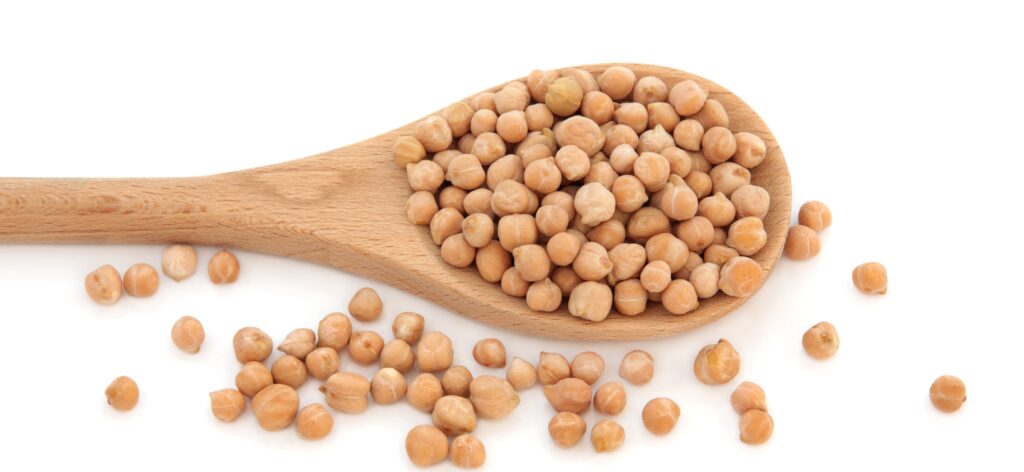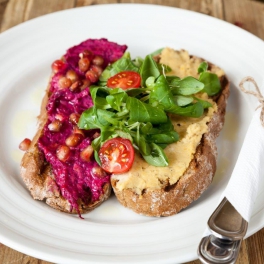Sadly, chickpea has been forgotten for many years. It is one of those foods that our grandmothers used to cook with on a daily basis but over time, it has been pushed out from our menus by fast food industry. The kids today know it only as a falafel bought in the street-food stall or from an Arabic world´s cuisine. Quite hypocritically, it´s perceived as one of the vegan / healthy-lifestyle freaks´ worshipped foods, whilst there are legitimate reasons it should be incorporated into our national diet:
Lowering cholesterol
Exactly those who despise all the healthy foods and don´t believe that diet can heal our bodies without using medications are those who would feel their positive effects the most. High cholesterol belongs to the group of diseases that are the most prevalent and have the highest ranking on cause of deaths in Europe. Chickpea contains an average of 8g of dietary fiber for 100g serving size which is amazingly effective in lowering the LDL (bad cholesterol). Besides soluble fiber, chickpea has high amounts of magnesium, folate, beta-sitosterol and saponins, all of which have great cardio-protective properties.
Strong body is cancer-free
Many people nowadays suffer from low levels of iron in their blood. This can lead to anemia with symptoms like loss of concentration, dizziness, weakness, and mainly unbearable fatigue making it almost impossible to perform everyday activities. An average portion of chickpea contains 26% of daily recommended amount of iron, which combined with e.g. spinach and beetroot will keep you from danger.
A study by the American Journal of Clinical Nutrition from 2013 has found that women who eat legumes on a regular basis are 40% less likely to get type 2 diabetes. The reason behind this was again, the soluble fiber, and a slow-releasing type of carbohydrate which aids the digestive system and keeps blood sugar levels stable. Moreover, chickpea is also a great source of zinc (17% of RDA) and copper (30% of RDA), two minerals which are responsible for repairing cells and keeping your immune system strong.
Lastly, the type of fiber contained in chickpea, when fermented in the gut, creates a by-product of metabolism called butyrate. It is a fatty acid that has been proven to cause self-destruction of cancerous cells.
Weight loss and muscle mass
An average portion of chickpea contains 15g of protein. Considering the recommended daily intake for adults (women-46g, men-56g), it is about a 1/3 of your daily needs. There are athletes and body builders who often go to extreme measures and consume up to 1 kg of chicken breasts a day for a week while working out strenuously, or they take the less healthy bus easier way and use whey protein powders or even anabolics. Most of them don´t realize what harm they might be doing to themselves, whilst it is so easy to fill up on protein the healthy way.
At the end, we have to mention the fiber again – now for weight loss. One thing is that naturally, the protein and fiber in legumes make you feel fuller for longer, we all know that. However, there is one more trick – these two nutrients together slow down insulin release which prevents the fat to be stored (especially around the tummy, the most dangerous type of fat) so that clearly, we must lose weight. Then, the vitamins and minerals in chickpeas give you enough energy for exercising – by which we just created a perfect weight-loss program.
OUR TIP: Hummus with beetroot, lettuce, and fresh bread
by Katarína Vicová
References
Athena Tradewinds (n.d.). Kabuli chickpeas [picture]. Retrieved from: http://athenatradewinds.com/kabuli-chick-peas/
Devon, R. (2013). Benefits of chickpeas. Retrieved from: http://www.livestrong.com/article/408455-benefits-of-chickpeas/
Healwithfood (2015). 6 health benefits of chickpeas (garbanzo beans). Retrieved from: http://www.healwithfood.org/health-benefits/chickpeas-weight-loss-cholesterol.php
Nutrition Data (2014). Chickpeas. Retrieved from: http://nutritiondata.self.com/facts/legumes-and-legume-products/4326/2


